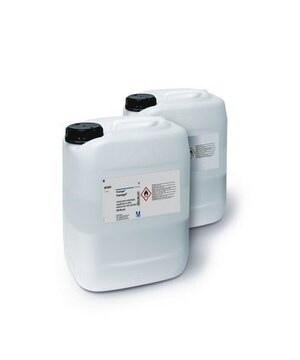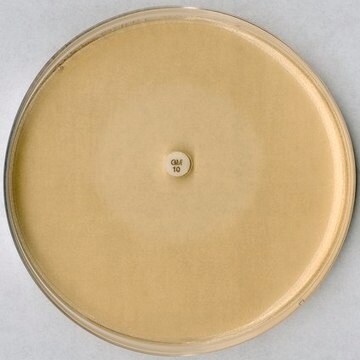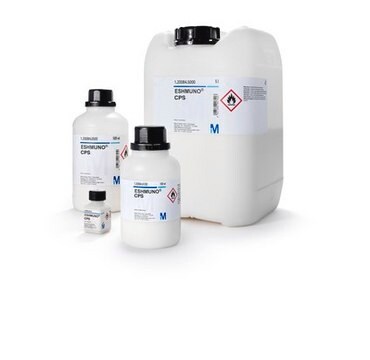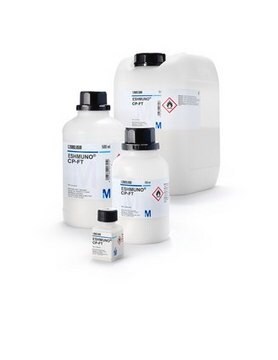Kluczowe dokumenty
1.16890
Fractogel® EMD SO3⁻ (S) Resin
Synonim(y):
Fractogel® EMD SO₃⁻ (S)
About This Item
Polecane produkty
ligand
(Sulfoisobutyl)
Poziom jakości
100
400
opis
strong cation exchanger, suspension in 20% ethanol and 150 mM NaCl (20-40 µm)
sterylność
sterile (Caustic Stable)
Próba
≥90% (HPLC)
Formularz
resin
producent / nazwa handlowa
Calbiochem®
Parametry
8 bar max. pressure
80 cm/hr flow rate
grupa aktywna macierzy
methacrylate
średnia wielkość cząstek
20-40 um μm
pojemność
150 mg binding capacity (lysozyme/ml of resin)
temp. przejścia
flash point 35 °C (Does not sustain combustion.)
gęstość
1.43 g/cm3 at 20 °C
gęstość nasypowa
1000 kg/m3
metoda separacji
strong cation exchange
Warunki transportu
ambient
temp. przechowywania
2-8°C
Szukasz podobnych produktów? Odwiedź Przewodnik dotyczący porównywania produktów
Opakowanie
- 1.16882.0100: Fractogel® EMD SO3- (S) Resin 100ml
- 1.16882.0010: Fractogel® EMD SO3- (S) Resin 10ml
- 1.16882.0500: Fractogel® EMD SO3- (S) Resin 500ml
- 1.16882.5000: Fractogel® EMD SO3- (S) Resin 5L
Ostrzeżenie
Komentarz do analizy
Microscopic evaluation: Uniform spherical particles,no agglomerates,no fines
Extractable matter (water): ≤ 0.05 %
Cerium: ≤ 10 µg/g
Pressure drop(column: ID=1.6 cm, L=10 cm at 5 ml/min): ≤ 5.0 bar
Particle size (d10): 20 - 28 µm
Particle size (d50): 24 - 34 µm
Particle size (d90): 28 - 38 µm
Colony forming units (TAMC + TYMC): ≤ 100 CFU/ml
Endotoxins: ≤ 1.00 EU/ml
Protein binding capacity (lysozyme): 120 - 180 mg/ml
Functional test (c:d): ≤ 0.15
Functional test (b:a): ≤ 0.15
Functional test: Separation chymotrypsinogen A, cytochrom C and lysozyme
Informacje prawne
Hasło ostrzegawcze
Warning
Zwroty wskazujące rodzaj zagrożenia
Zwroty wskazujące środki ostrożności
Klasyfikacja zagrożeń
Flam. Liq. 3
Kod klasy składowania
3 - Flammable liquids
Klasa zagrożenia wodnego (WGK)
WGK 1
Temperatura zapłonu (°F)
95.0 °F
Temperatura zapłonu (°C)
35 °C
Certyfikaty analizy (CoA)
Poszukaj Certyfikaty analizy (CoA), wpisując numer partii/serii produktów. Numery serii i partii można znaleźć na etykiecie produktu po słowach „seria” lub „partia”.
Masz już ten produkt?
Dokumenty związane z niedawno zakupionymi produktami zostały zamieszczone w Bibliotece dokumentów.
Nasz zespół naukowców ma doświadczenie we wszystkich obszarach badań, w tym w naukach przyrodniczych, materiałoznawstwie, syntezie chemicznej, chromatografii, analityce i wielu innych dziedzinach.
Skontaktuj się z zespołem ds. pomocy technicznej



